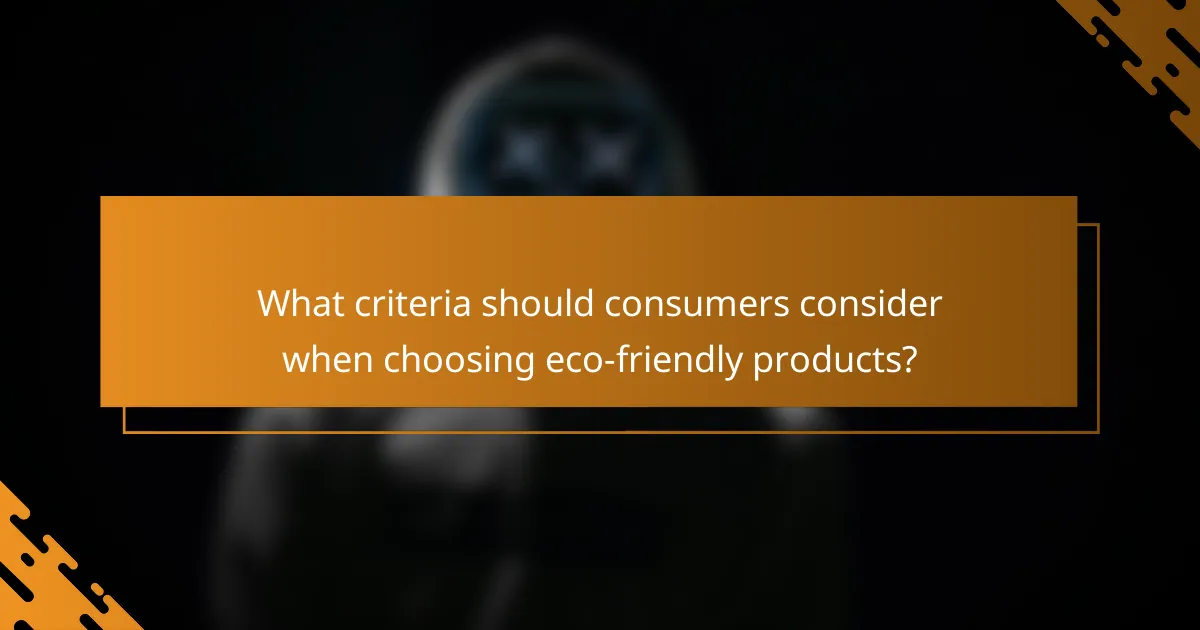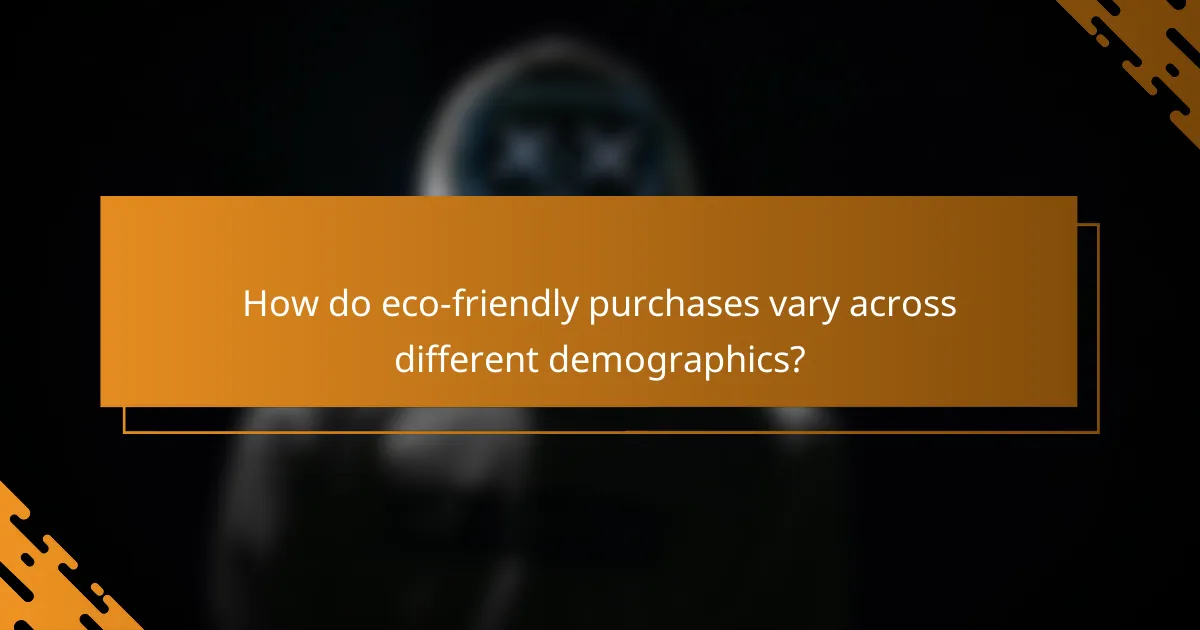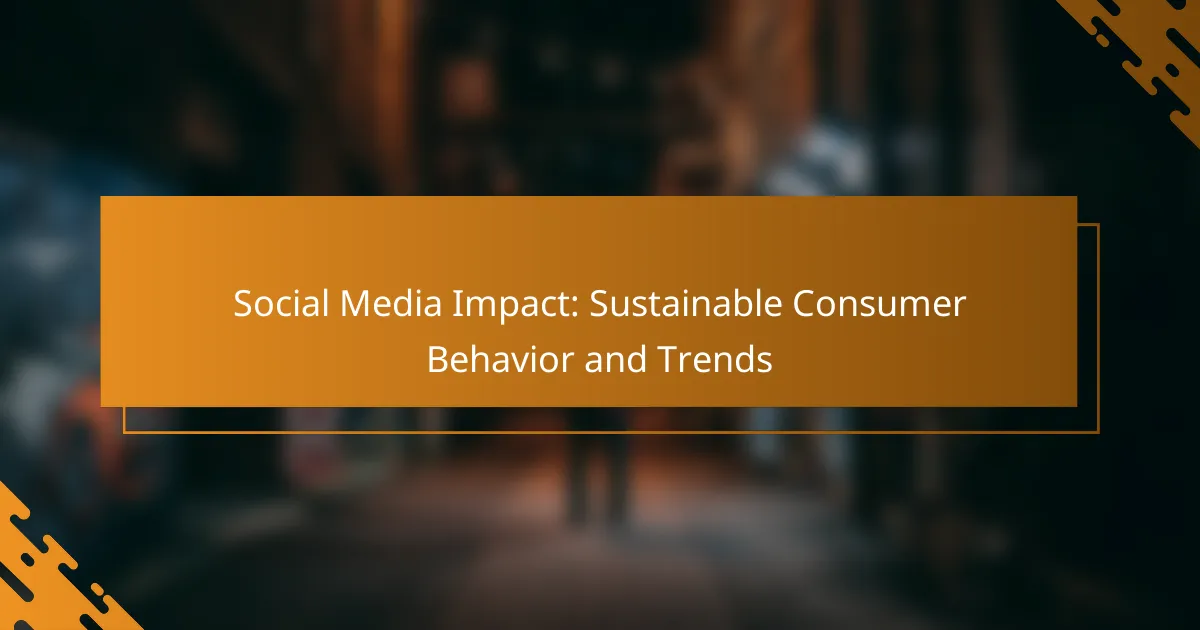As awareness of environmental issues grows, consumers are increasingly motivated to make eco-friendly purchases driven by a desire to protect the planet and fulfill social responsibilities. Understanding the psychology behind these choices reveals how personal values, social norms, and feelings of guilt influence purchasing decisions. In 2023, trends show a preference for sustainability, transparency, and second-hand options, highlighting a shift towards responsible consumption.

What are the key motivations for eco-friendly purchases?
Key motivations for eco-friendly purchases include a desire to protect the environment, fulfill social responsibilities, improve personal health, achieve cost savings, and foster brand loyalty. Understanding these motivations can help consumers make informed choices that align with their values.
Environmental concern
Environmental concern drives many consumers to choose eco-friendly products. This motivation stems from a growing awareness of issues like climate change, pollution, and resource depletion. Shoppers often seek products that minimize their ecological footprint, such as those made from sustainable materials or with reduced packaging.
To align purchases with environmental values, consumers can look for certifications like Energy Star or USDA Organic, which indicate a commitment to sustainability. Additionally, supporting local businesses can reduce transportation emissions and promote community resilience.
Social responsibility
Social responsibility motivates individuals to purchase eco-friendly products that contribute positively to society. Many consumers feel a moral obligation to support brands that prioritize ethical practices, such as fair labor conditions and community engagement. This sense of duty can influence buying decisions significantly.
Engaging with brands that give back to the community or invest in social causes can enhance consumer satisfaction. Shoppers can research companies’ social initiatives to ensure their purchases reflect their values and support meaningful change.
Health benefits
Health benefits are a significant motivation for choosing eco-friendly products. Many consumers are increasingly aware of the potential health risks associated with chemicals in conventional products, such as pesticides and synthetic additives. Opting for organic or natural alternatives can lead to healthier lifestyles.
For example, selecting organic food can reduce exposure to harmful chemicals, while eco-friendly cleaning products can improve indoor air quality. Consumers should look for products with clear ingredient lists and certifications that guarantee safety and health benefits.
Cost savings
Cost savings can also motivate eco-friendly purchases, particularly when consumers recognize the long-term financial benefits. Energy-efficient appliances, for instance, may have a higher upfront cost but can lead to significant savings on utility bills over time. Similarly, reusable products can reduce the need for frequent purchases.
To maximize cost savings, consumers should consider the total cost of ownership rather than just the initial price. Investing in durable, sustainable products can yield savings in the long run, making eco-friendly choices financially viable.
Brand loyalty
Brand loyalty plays a crucial role in motivating eco-friendly purchases. Consumers often develop strong connections with brands that demonstrate a commitment to sustainability and ethical practices. This loyalty can lead to repeat purchases and advocacy for the brand among peers.
To build brand loyalty, companies should consistently communicate their sustainability efforts and engage with customers on environmental issues. Consumers can support brands that align with their values, fostering a sense of community and shared purpose in promoting eco-friendly practices.

How do consumer psychology and eco-friendly purchasing intersect?
Consumer psychology plays a crucial role in eco-friendly purchasing by influencing how individuals perceive and prioritize sustainable products. Factors such as personal values, social norms, and feelings of guilt or responsibility can significantly affect purchasing decisions related to environmentally friendly options.
Influence of values
Personal values are fundamental in shaping eco-friendly purchasing behavior. Consumers who prioritize sustainability, environmental stewardship, and social responsibility are more likely to seek out and invest in eco-friendly products. For instance, individuals who value health may prefer organic or non-toxic items, while those concerned about climate change might choose products with lower carbon footprints.
To leverage values in marketing, brands can emphasize their commitment to sustainability and ethical practices. Clear messaging about the environmental benefits of products can resonate with consumers’ values, encouraging them to make eco-conscious choices.
Impact of social norms
Social norms significantly influence consumer behavior, particularly in the context of eco-friendly purchasing. When individuals perceive that their peers prioritize sustainability, they are more likely to follow suit. This can create a ripple effect, where eco-friendly choices become a standard within communities or social groups.
Brands can harness social proof by showcasing testimonials, user-generated content, or endorsements from influencers who advocate for sustainable living. Highlighting community initiatives or collective efforts can further reinforce the idea that eco-friendly purchasing is a socially accepted norm.
Cognitive dissonance
Cognitive dissonance occurs when there is a conflict between a consumer’s beliefs and their actions, often leading to discomfort. For example, a consumer who values sustainability but purchases non-eco-friendly products may experience guilt or regret. This dissonance can motivate them to change their purchasing habits to align with their values.
To address cognitive dissonance, brands can provide educational resources that clarify the benefits of eco-friendly products and how they align with consumers’ values. Offering easy-to-understand comparisons between sustainable and conventional options can help consumers overcome their internal conflicts and encourage more responsible purchasing decisions.

What trends are shaping eco-friendly purchasing behavior in 2023?
In 2023, eco-friendly purchasing behavior is increasingly influenced by consumer preferences for sustainability, transparency, and second-hand options. These trends reflect a growing awareness of environmental issues and a desire for responsible consumption.
Rise of sustainable brands
The rise of sustainable brands is a significant trend in eco-friendly purchasing. Consumers are gravitating towards companies that prioritize environmentally friendly practices, such as using renewable materials and reducing waste. Brands like Patagonia and Allbirds exemplify this shift by integrating sustainability into their core missions.
Shoppers are often willing to pay a premium for products from sustainable brands, with many indicating that they would choose eco-friendly options even if they cost more. This trend encourages more companies to adopt sustainable practices to meet consumer demand.
Increased demand for transparency
Transparency in sourcing and production processes is becoming crucial for consumers. Buyers increasingly want to know where their products come from and how they are made. Brands that provide clear information about their supply chains, labor practices, and environmental impact gain a competitive edge.
For instance, companies that share detailed sustainability reports or certifications, like Fair Trade or organic labels, can build trust with consumers. This demand for transparency often leads to more informed purchasing decisions and fosters brand loyalty.
Growth of second-hand markets
The growth of second-hand markets is reshaping how consumers approach eco-friendly purchases. Thrift stores, online resale platforms, and clothing swaps are gaining popularity as sustainable alternatives to buying new items. This trend not only reduces waste but also promotes a circular economy.
Platforms like Depop and Poshmark are thriving as consumers seek unique, affordable, and eco-conscious options. Engaging in second-hand shopping can significantly lower one’s carbon footprint while allowing individuals to express their personal style.

How can e-commerce platforms support eco-friendly purchases?
E-commerce platforms can enhance eco-friendly purchases by integrating features that prioritize sustainability. These features help consumers make informed decisions by highlighting environmentally friendly products and practices.
Product filtering options
Product filtering options allow consumers to easily find eco-friendly items by selecting criteria such as organic materials, sustainable sourcing, or minimal packaging. This functionality simplifies the shopping experience, enabling users to focus on products that align with their values.
For example, a platform might offer filters for “biodegradable,” “recyclable,” or “locally sourced” products. Implementing these filters can significantly increase the visibility of sustainable choices, encouraging more eco-conscious purchasing behavior.
Eco-label certifications
Eco-label certifications provide consumers with assurance that products meet specific environmental standards. Recognized labels such as Energy Star, Fair Trade, or USDA Organic help shoppers identify trustworthy eco-friendly options quickly.
Platforms should prominently display these certifications on product pages, making it easier for buyers to recognize and choose certified items. This transparency builds trust and encourages consumers to support brands committed to sustainability.
Carbon footprint tracking
Carbon footprint tracking features enable consumers to understand the environmental impact of their purchases. By providing estimates of the carbon emissions associated with products, e-commerce platforms can guide users toward lower-impact alternatives.
For instance, a platform might show the carbon footprint of shipping options, allowing consumers to select more sustainable delivery methods. This added layer of information empowers shoppers to make choices that align with their eco-friendly goals.

What criteria should consumers consider when choosing eco-friendly products?
Consumers should evaluate eco-friendly products based on material sourcing, production processes, and end-of-life options. These criteria help ensure that purchases align with sustainability goals and minimize environmental impact.
Material sourcing
Material sourcing refers to how and where the raw materials for a product are obtained. Consumers should look for products made from renewable resources, such as bamboo or recycled materials, which reduce reliance on virgin materials. Certifications like FSC (Forest Stewardship Council) for wood products can indicate sustainable sourcing practices.
Additionally, consider the distance materials travel to reach production facilities. Locally sourced materials often have a lower carbon footprint due to reduced transportation emissions.
Production processes
Production processes encompass the methods used to manufacture products and their environmental impact. Eco-friendly products typically utilize energy-efficient techniques and minimize waste during production. Look for brands that prioritize renewable energy sources, such as solar or wind, in their manufacturing operations.
It’s also beneficial to check if the production facilities adhere to environmental regulations and standards, which can vary by country. For instance, European Union regulations often enforce stricter environmental guidelines compared to other regions.
End-of-life options
End-of-life options refer to how a product can be disposed of or recycled after its useful life. Consumers should seek products that are recyclable, compostable, or biodegradable, which help reduce landfill waste. Packaging that clearly indicates recycling instructions can be a good indicator of a product’s sustainability.
Additionally, consider brands that offer take-back programs, allowing consumers to return products for proper recycling or repurposing. This not only promotes responsible disposal but also encourages a circular economy.

How do eco-friendly purchases vary across different demographics?
Eco-friendly purchases differ significantly across demographics such as age, income, and education level. Younger consumers often prioritize sustainability more than older generations, while higher-income individuals may have greater access to eco-friendly products.
Age and Eco-Friendly Purchases
Younger consumers, particularly Millennials and Gen Z, tend to be more inclined towards eco-friendly purchases than older generations. This trend is driven by a strong awareness of environmental issues and a desire for sustainable living.
For instance, studies show that younger shoppers are more likely to seek out brands that demonstrate a commitment to sustainability. They often prefer products that are organic, recyclable, or made from renewable resources.
Income Levels and Sustainability Choices
Income levels significantly influence eco-friendly purchasing behavior. Higher-income individuals often have more disposable income to spend on premium sustainable products, while lower-income consumers may prioritize affordability over sustainability.
However, many brands are now offering budget-friendly eco-friendly options, making it easier for consumers across various income levels to make sustainable choices. For example, discount retailers are increasingly stocking organic and eco-friendly products at competitive prices.
Education and Awareness
Education plays a crucial role in shaping eco-friendly purchasing habits. Individuals with higher education levels typically exhibit greater awareness of environmental issues and the benefits of sustainable products.
As a result, educated consumers are more likely to research brands and choose products that align with their values. They often look for certifications like Fair Trade or USDA Organic, which indicate a commitment to sustainability.



